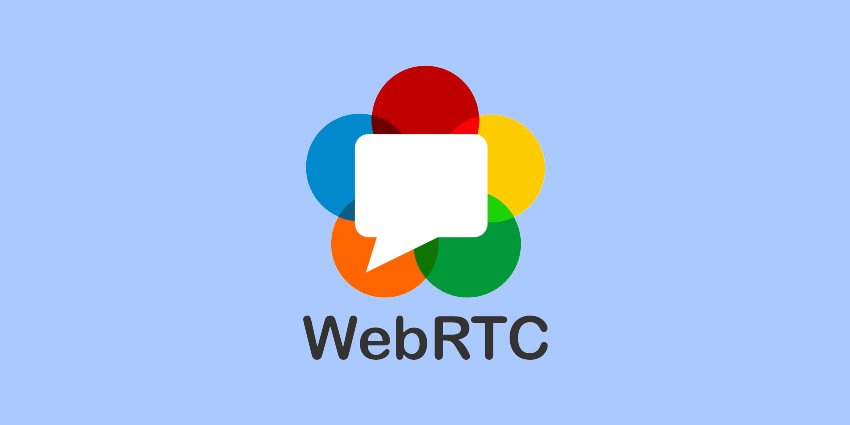In today’s interconnected world, real-time communication on the web has become increasingly important. Whether it’s video conferencing, live streaming, or peer-to-peer file sharing, the demand for seamless, low-latency interactions is on the rise. This is where WebRTC (Web Real-Time Communication) comes into play. In this comprehensive guide, we will explore what WebRTC is, how it works, and its numerous applications across various industries.
What is WebRTC?
WebRTC is an open-source project that enables real-time communication between web browsers and mobile applications. It provides a set of protocols and APIs that allow developers to incorporate audio, video, and data sharing capabilities directly into web applications without the need for additional plugins or software installations. WebRTC harnesses the power of HTML5, JavaScript, and other web technologies to facilitate secure, peer-to-peer communication.
How Does WebRTC Work?
WebRTC consists of three core components: the getUserMedia API, the RTCPeerConnection API, and the RTCDataChannel API.
- getUserMedia API: This API allows web applications to access the user’s media devices, such as cameras and microphones. It enables the capture of audio and video streams, which can then be transmitted in real-time.
- RTCPeerConnection API: The RTCPeerConnection API establishes a direct peer-to-peer connection between two or more browsers. It handles tasks like encryption, bandwidth management, and NAT traversal to ensure secure and efficient transmission of media streams.
- RTCDataChannel API: The RTCDataChannel API enables the exchange of arbitrary data between peers. It can be used for various purposes, such as file sharing, text messaging, and multiplayer gaming.
WebRTC (Web Real-Time Communication) offers numerous benefits for real-time communication applications, but it also has certain limitations. Here are the pros and cons of WebRTC:
Pros of WebRTC
- Ease of Use: WebRTC simplifies real-time communication implementation by providing browser-based APIs and protocols. Developers can integrate audio, video, and data sharing capabilities into web applications without the need for additional plugins or complex setups.
- Real-time Communication: WebRTC enables low-latency, real-time communication between browsers or mobile applications. It supports high-quality audio and video streaming, facilitating seamless video conferencing, live streaming, and other interactive applications.
- Peer-to-Peer Connection: With WebRTC, direct peer-to-peer connections are established between browsers, eliminating the need for intermediate servers. This reduces latency and enhances privacy and security.
- Cross-platform Compatibility: WebRTC is supported by major web browsers, including Chrome, Firefox, Safari, and Opera, making it highly accessible across different platforms and devices.
- Security: WebRTC incorporates encryption protocols to ensure secure communication between peers. Media streams and data transmissions can be encrypted using Datagram Transport Layer Security (DTLS) and Secure Real-time Transport Protocol (SRTP).
- Cost-effective: As an open-source project, WebRTC offers cost advantages by eliminating the need for expensive third-party communication services or licenses. It allows businesses to build their own real-time communication solutions without significant financial investments.
Pros of WebRTC
- Browser Support: While WebRTC is widely supported, some older web browsers may have limited or no support for certain features or APIs. This can create compatibility issues for users who are not on the latest browser versions.
- NAT Traversal: WebRTC relies on Network Address Translation (NAT) traversal techniques to establish peer-to-peer connections. However, in some network configurations, especially with strict firewalls or complex NAT setups, establishing direct connections can be challenging.
- Bandwidth Consumption: Real-time communication applications using WebRTC can consume significant bandwidth, particularly for video streaming. This can be a concern for users with limited or unstable internet connections.
- Scalability: WebRTC is primarily designed for small-scale, peer-to-peer communication. Scaling up to accommodate a large number of participants in a conference or broadcasting scenario requires additional infrastructure and server-side implementations.
- Lack of Support for Legacy Systems: WebRTC is a modern technology that may not be compatible with older systems or devices. Integrating WebRTC into legacy applications may require additional development efforts or workarounds.
The Applications of WebRTC
WebRTC has gained significant popularity due to its versatility and wide range of applications. Here are a few examples:
- Video Conferencing: WebRTC enables high-quality, real-time video conferencing directly in web browsers, eliminating the need for dedicated software or plugins.
- Live Streaming: With WebRTC, content creators can deliver live video and audio streams directly to their audience without relying on third-party platforms.
- Web-based Telephony: WebRTC facilitates browser-to-browser voice calls, allowing businesses to integrate voice communication features into their web applications.
- Remote Collaboration: WebRTC powers collaborative tools that enable real-time document editing, screen sharing, and whiteboarding, fostering seamless remote collaboration.
- Internet of Things (IoT): WebRTC enables secure and low-latency communication between IoT devices, allowing for real-time data exchange and control.
WebRTC is a game-changing technology that empowers developers to create real-time communication applications directly within web browsers. Its robust set of APIs and protocols enables seamless audio, video, and data sharing, opening up a world of possibilities across various industries. Whether it’s video conferencing, live streaming, or remote collaboration, WebRTC is revolutionizing how we communicate and interact on the web.
As the demand for real-time communication continues to grow, embracing WebRTC can provide a competitive advantage and enhance user experiences. By leveraging this powerful technology, businesses and developers can create innovative applications that bring people closer together, no matter where they are in the world.
So, are you ready to unlock the potential of WebRTC and revolutionize your web-based communication? Embrace this transformative technology and embark on a new era of seamless, real-time interactions.
